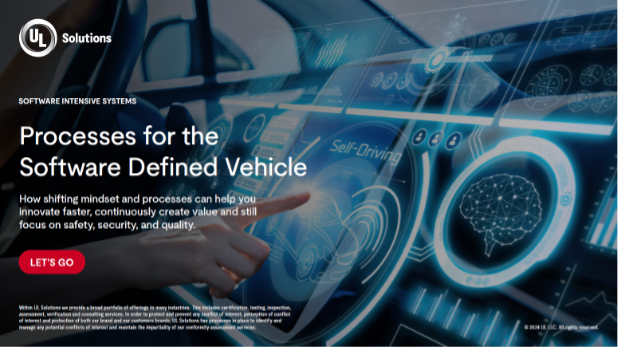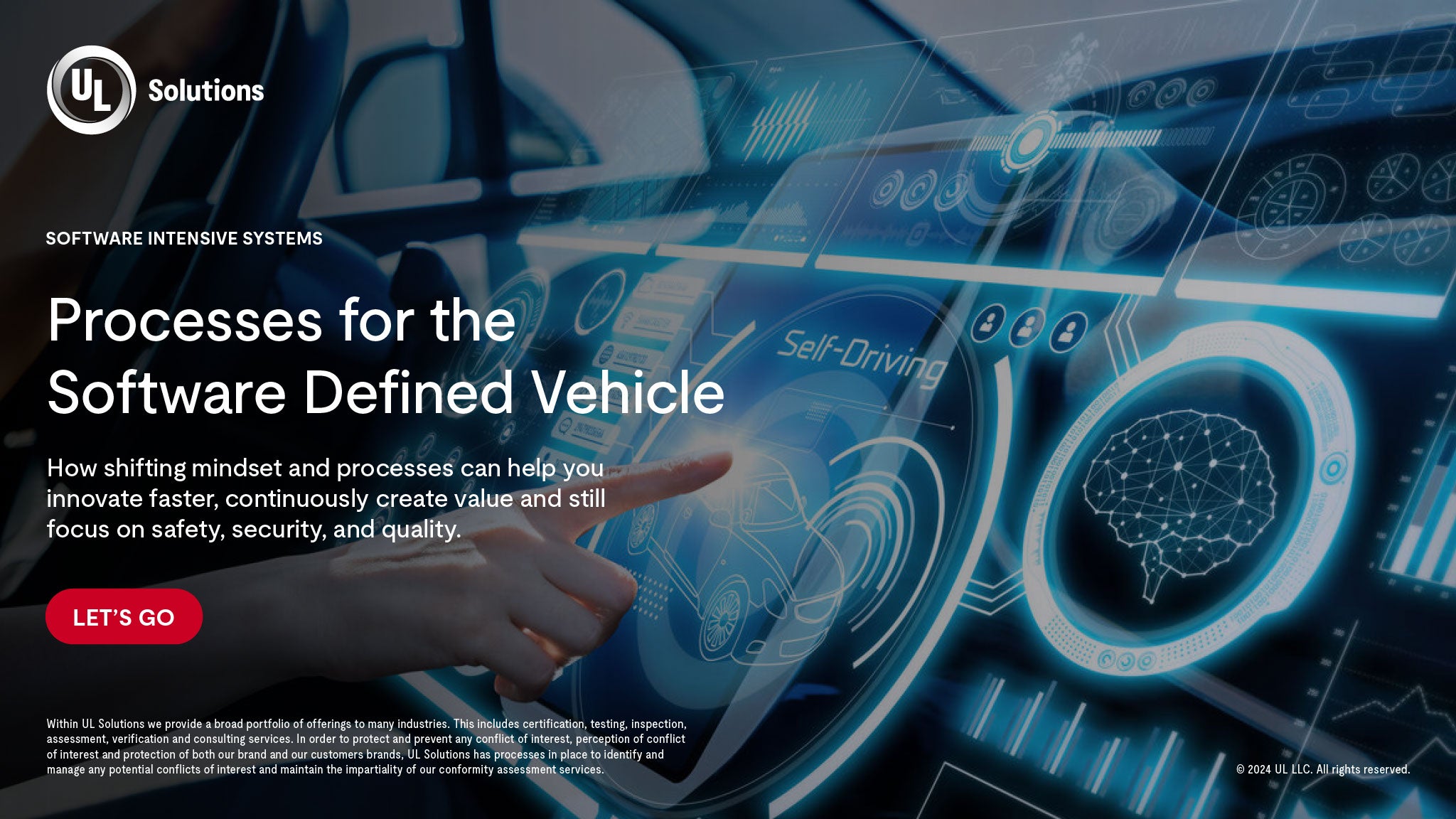
UL Solutions Software Intensive Systems offers the automotive industry this look at how development processes are being impacted by the shift towards software-defined vehicles. A new mindset — and accompanying software-centric development approaches — makes innovation more rapid and affordable, while still maintaining a safety and security focused culture.
Here are some key takeaways:
- The automotive industry is moving from a milestone-oriented or project-oriented delivery model to a continuous value creation model.
- Development lifecycles become more iterative and incremental by utilizing software-centric delivery models.
- Safety, security, and quality need to be woven into the engineering processes instead of being handled separately.



